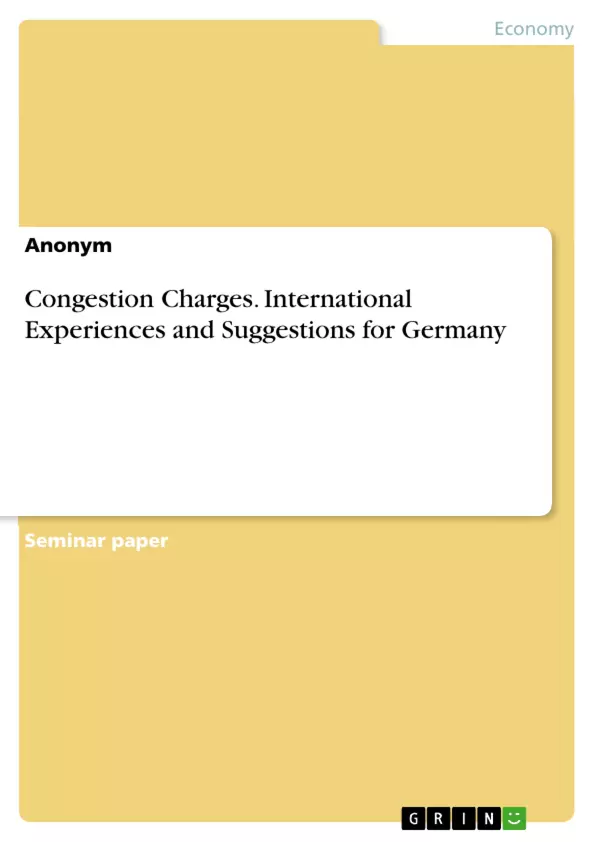The congestion problem could be alleviated by switching to more space-efficient means of transport such as local public transport. The majority of cities lack incentive systems that encourage individual users to switch. This paper addresses this problem and discusses the possibility of introducing a price mechanism within the framework of a congestion charge. In the second chapter, transport economic models and the urban modal split are used as the basis.
In the second half of the second chapter, congestion is considered as an expression of a collective action problem and possible counter-mechanisms. With regard to the research question, attention is paid to the congestion charge. In the third chapter, the case study method is used to analyse the three cities Stockholm, London and Singapore that have already introduced congestion charges. From the different price models as well as effects on the demand for transport services, recommendations for action for the application in German cities are developed in the fourth chapter. The last chapter contains a critical discussion and a conclusion.
Inhaltsverzeichnis (Table of Contents)
- 1 Introduction
- 2 The transport market in urban areas
- 2.1 Mobility in urban areas
- 2.2 Congestion in urban areas
- 2.3 Counter-mechanisms to urban congestion
- 2.3.1 Demand management in urban transportation systems
- 2.3.2 Static and dynamic congestion charges
- 2.3.3 Constraints in congestion charges
- 3 Case Studies
- 3.1 Introduction to the case studies
- 3.2 London
- 3.3 Stockholm
- 3.4 Singapore
- 4 Recommendations for Germany
- 5 Reflection and conclusion
Zielsetzung und Themenschwerpunkte (Objectives and Key Themes)
This paper examines the potential for introducing a congestion charge as a mechanism to address congestion in urban areas. The study focuses on the impact of such a charge on traffic flow, air quality, and public transport usage. It also explores the economic and social implications of congestion charges, including the potential for revenue generation and equity concerns.
- The economic and social effects of urban congestion
- The use of congestion charges as a policy tool to manage urban traffic
- The design and implementation of congestion charge schemes
- The experience of different cities in implementing congestion charges
- Recommendations for the introduction of congestion charges in German cities
Zusammenfassung der Kapitel (Chapter Summaries)
Chapter 1 provides an introduction to the problem of urban congestion and its impact on cities worldwide. Chapter 2 explores the transport market in urban areas, including the demand for mobility, the causes and consequences of congestion, and potential counter-mechanisms. The chapter focuses on congestion charges as a demand management tool, outlining the various pricing models and their potential effects.
Chapter 3 presents case studies of cities that have implemented congestion charges, including London, Stockholm, and Singapore. The chapter analyzes the impact of these charges on traffic flow, air quality, and public transport usage, highlighting the challenges and successes experienced in each case.
Schlüsselwörter (Keywords)
The key keywords for this paper are: urban congestion, congestion charges, demand management, urban transportation systems, traffic flow, air quality, public transport usage, economic impact, social impact, case studies, London, Stockholm, Singapore, Germany.
- Quote paper
- Anonym (Author), 2019, Congestion Charges. International Experiences and Suggestions for Germany, Munich, GRIN Verlag, https://www.hausarbeiten.de/document/1034382


